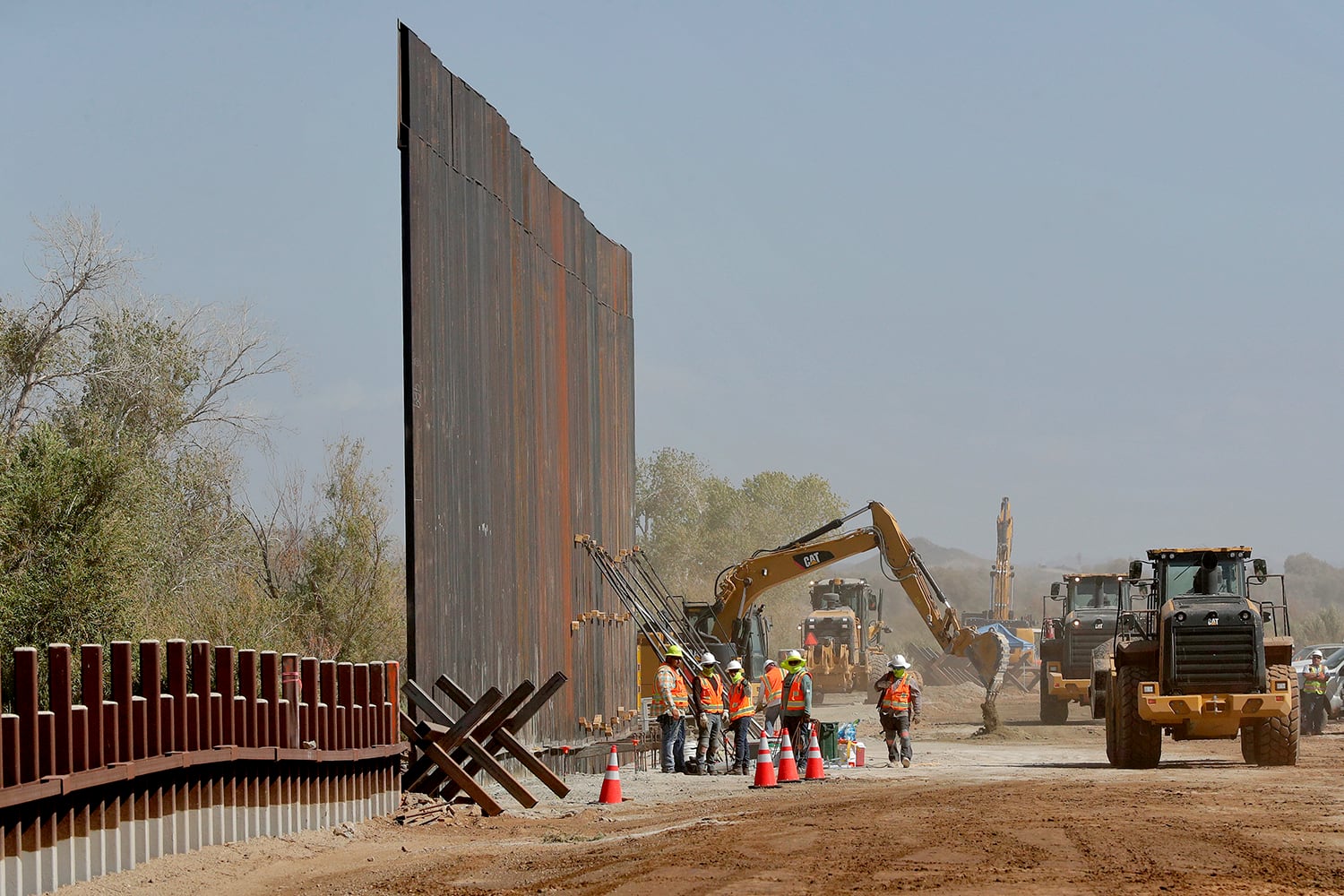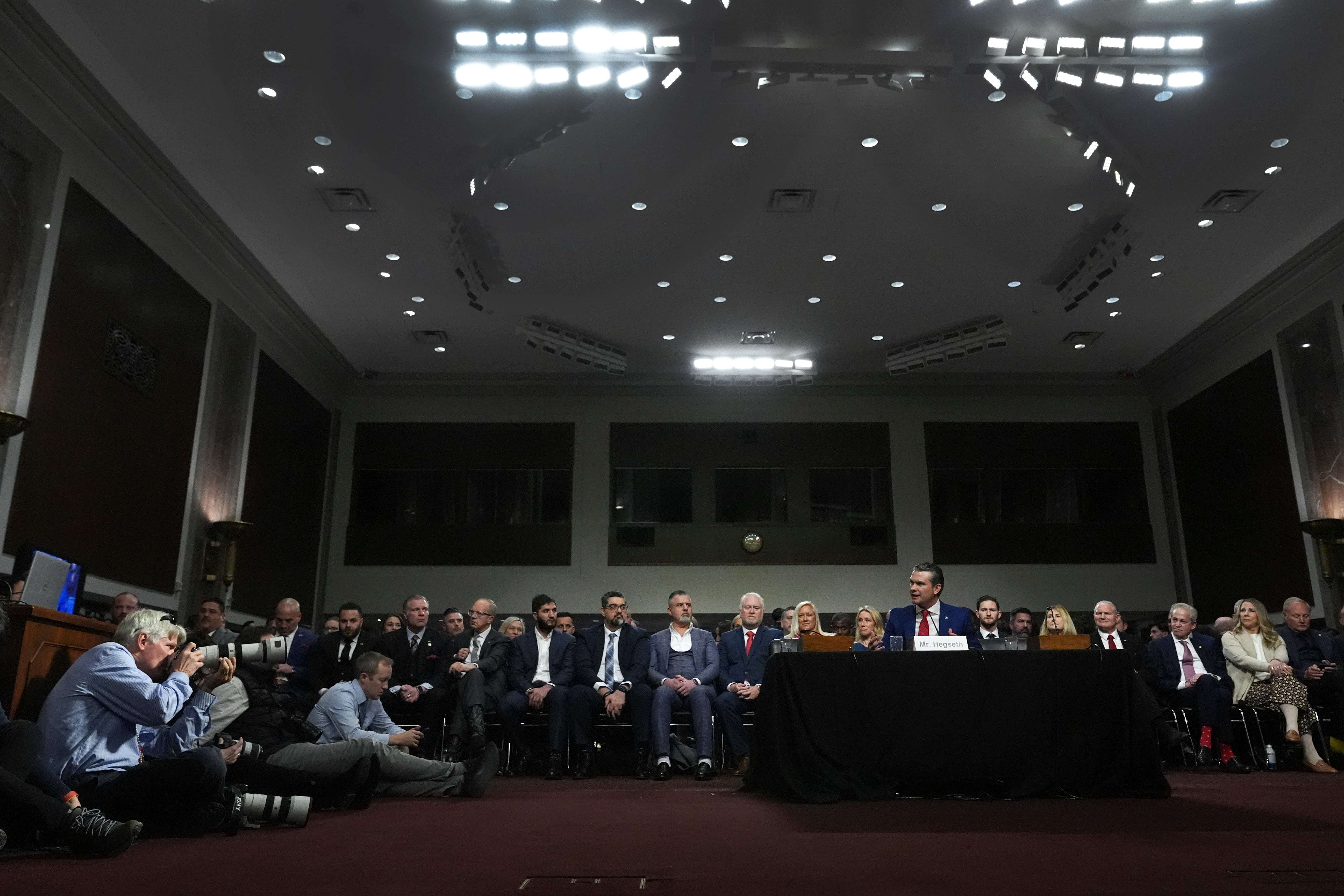As the Defense Department announced Thursday that it would divert billions of dollars that were put in the Pentagon budget to support military operations and reprogram that to instead pay for almost 200 miles of border wall this year, a Pentagon official told reporters that he did not anticipate that military money would need to be shifted around for a third year in a row to pay for border barriers.
About $3.8 billion in funds that were originally set aside to pay for planes, ships, ground vehicles and other programs will now go to the Army Corps of Engineers to put up 177 miles of fencing along the U.S. border with Mexico, according to the deputy assistant defense secretary for homeland defense integration.
“The improved ability to impede and deny elicit activity within the border barrier area projects will help to deter and prevent illegal cross-border activity and stem the flow of illegal narcotics into the United States,” Bob Salesses said Thursday. “It also creates a much safer operational environment for law enforcement.”
The latest diversion will bring the military’s total border construction expenditure to almost $10 billion, after $6 billion in counter-drug and military construction funds went to border wall construction in 2019, the maximum amount the Pentagon is allowed to re-program after a budget has been signed into law.
But after this year, Salesses said, the Defense Department doesn’t anticipate another request for border wall funding. The total project cost has been estimated at $18 billion for 722 miles, which President Donald Trump originally said should be complete by 2022.
“Based on where we are in the process, the ability to speed that up and deliver on the border barrier construction has obviously increased significantly," he said when asked how they could estimate that all of the money required would be set aside this year.
“I don’t have anything specific, but it’s clear that we’ll be meeting the requirements that have been identified by the president to accelerate and build the border barrier as quickly and effectively as possible," Salesses said.
Border deployments by active-duty and National Guard troops are expected to continue throughout the year. The most recent totals have about 5,000 troops doing surveillance and other Customs and Border Patrol support.
A month ago, the Homeland Security Department sent the Pentagon a request for $5.5 billion, Salesses said, which would have covered 271 miles of wall. DoD opted to pitch in $3.8 billion ― or 177 miles of 30-ft. bollard-style fencing ― of that request, he said, because based on their estimates, there isn’t enough time left in the year to award contracts and start building on that remaining 94 miles.
“I’m not sure that that will be made up,” he said. “Clearly, the Defense Department will not be constructing that. That may be something that DHS does in the future.”
The barriers will cover border sections in San Diego and El Centro, California; Yuma and Tucson, Arizona; and Del Rio and El Paso, Texas, and should be completed within the next two years, he added.
“The transfer of funds is based on what the law allows, and the items to be funded are a higher priority than the item for which the funds were transferred,” Salesses said.
RELATED

The programs on the most recent chopping block spanned the military services, including Marine Corps F-35s, Air Force C-130Js, development funding for a Navy amphibious ship replacement and $1.3 billion in National Guard and Reserve “miscellaneous equipment.”
All of the funds targeted were excess, Salesses said, either because they were not being spent or because the programs did not immediately need them to hit their development milestones.
The Pentagon has not confirmed whether it plans to also cut into its military construction budget again this year. Last September, officials announced that $3.6 billion from the 2019 military budget that was originally intended for on-base schools, training centers and other facilities would be re-routed to the border wall.
At the time, defense officials said, they hoped Congress would plus-up the 2020 budget to make up for the loss, but in the battle over congressional border wall funding, the budget stayed nearly flat.
Then last month, the Washington Post reported that internal White House documents showed plans to re-program an additional $3.7 billion from the military construction.
“I’m not aware of us doing that at this point, but that’s always a possibility,” Salesses said of the report.
So far, the Army Corps of Engineers has built just under 37 miles of barrier since the Pentagon first announced it would put up funding early last year. So far, about $3.3 has been awarded for just over 200 miles of wall.
Meghann Myers is the Pentagon bureau chief at Military Times. She covers operations, policy, personnel, leadership and other issues affecting service members.










